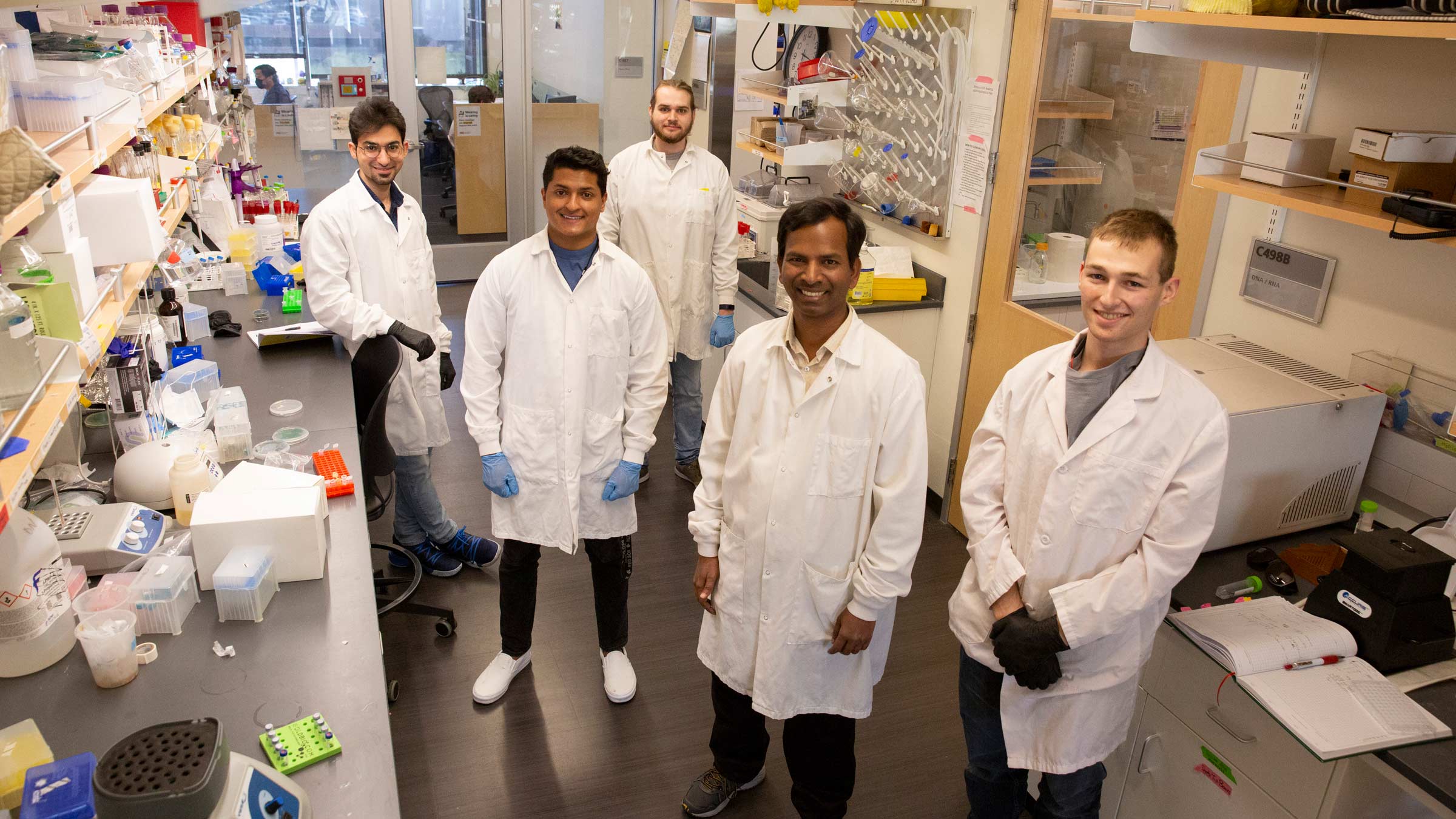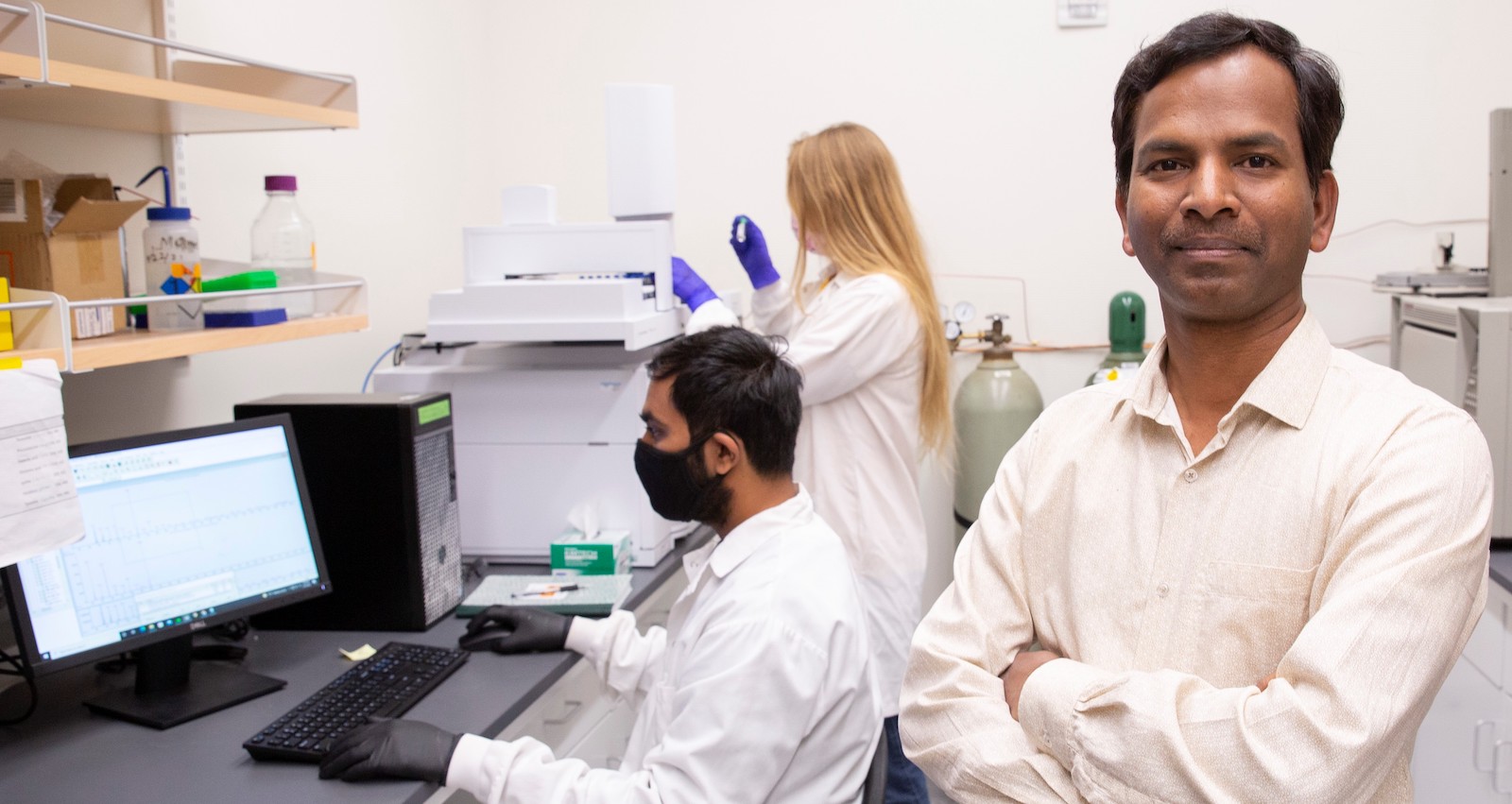
Expanding biotechnology’s possibilities
Harnessing microbial metabolic processes promises to make chemicals production sustainable and environmentally friendly

Eleven faculty members in the Ira A. Fulton Schools of Engineering at Arizona State University have received NSF CAREER Awards in 2022.
Talk of metabolism modification might instinctively evoke suspicion. The idea of inhibiting, boosting or otherwise altering natural biological processes conjures up science fiction stories of the ominous consequences of meddling in nature’s ways.
In reality, however, metabolic engineers like Arul Mozhy Varman are working to help us live more safely and productively by enhancing nature’s abilities. His research aspirations focus on a vision for breakthroughs in engineering microbial metabolisms to bring us an array of benefits, particularly in the production of bulk chemicals, fuels and pharmaceuticals.
When metabolic engineers talk about microbial cells, they are thinking more precisely of what they call microbial cell factories, in which thousands of chemical reactions are occurring, Varman says. What he and others in his area of expertise do is find ways to optimize genetic and related metabolic processes in these microbial cell factories to increase their production of various chemicals.
They use genetic and metabolic engineering techniques, for instance, to remove constraints on the abilities of cells’ metabolisms to yield more of the chemicals we use to manufacture numerous products. This can enable production of more and better biomaterials, increase food supply and provide more effective pharmaceuticals and biotechnology to advance health care.
One major goal of metabolic engineering researchers is finding ways to use bio-organisms to provide these valuable chemicals more efficiently, cost-effectively and in quantities at industrial scales.
“What we are working to do is develop better techniques and technologies to enhance and multiply the quantity and the kinds of conversions we can do by using microbial cell factories to more effectively turn biomass into very useful products,” says Varman, an assistant professor of chemical engineering in the School for Engineering of Matter, Transport and Energy, one of the seven Ira A. Fulton Schools of Engineering at Arizona State University.
Enhancing benefits of biorefinery production
Such endeavors align with the U.S. government’s aspirations to see the advancement and expansion of operations and production in the country’s biorefineries, the facilities where biomass and other renewable and sustainable carbon feedstocks are converted into beneficial byproducts, especially chemicals, and into bio-based energy and fuel sources.
On the economic side of things, having more technologically advanced and productive biorefineries would be a big step in helping to insulate biorefineries of the future from the threats posed by inevitable market fluctuations, Varman says.
The research he is leading to help make biorefinery performance more robust and multifaceted has earned Varman a 2022 National Science Foundation Faculty Early Career Development Program (CAREER) Award that will provide almost $570,000 over the next five years to help fulfill the potential of his work.
Through the CAREER Award program, the NSF supports university faculty members early in their careers who are deemed to have the potential to excel in both research and education, to serve as role models in their academic departments and to lead advances in fields in which progress will serve national interests and priorities.
Work on this project in Varman’s Synthetic and Systems Biology Laboratory is focusing on developing a process for decoupling microbial metabolism, which involves severing of the interrelationships between different chemical compounds.
The research team is also using — and improving on — the latest advanced modeling and computational tools to assemble what Varman calls a “metabolism decoupling toolbox” to create engineered microbes that will be better suited to the future flexible biorefineries.

Arul Mozhy Varman brings new knowledge gained from his metabolic engineering research to numerous students through the chemical engineering courses he teaches in the Ira A. Fulton Schools of Engineering. Some of the students get opportunities to participate in his research, including doctoral student Apurv Mhatre (at left) and undergraduate Danika Kartchner (in background). Photographer: Erika Gronek/ASU
Through the decoupling process, Varman’s team will modify the metabolisms of microbial cell factories by separating the components of their metabolic networks to create pseudo compartments within a cell.
That sets the stage for engineering a different metabolic framework in which the carbon flux through each compartment of that framework has its origin from different carbon substrates, the starting chemicals that spark biological reactions in a cell.
That alteration to the metabolic process is expected to enable cells to more efficiently convert multiple carbon substrates into chemicals, and at the same time increase yields of substances that are ideal for use in a variety of industrial and commercial products.
“This is something that would really expand the flexibility and increase the possibilities of what we could do with microbial cell factories,” Varman says.
Research to provide teaching opportunities
The research also has educational goals. One is to provide learning opportunities to undergraduates who are underrepresented in science, engineering and technology fields — specifically in this case students in two Native American tribal schools, Navajo Technical University and Tohono O’odham Community College — by involving them in projects related to Varman’s research. These efforts will be led by Thiagarajan Soundappan at the technical university and by Theresa Lynn Newberry at the community college.
In addition, the research will be used as the basis for a Girls Make-A-Thon event designed to inspire young women to pursue studies in STEM fields.
Along with graduate students participating in the research, Varman says the project “will also provide opportunities for undergraduates to work on cutting-edge technologies early in their careers.”
He will also bring new knowledge generated by his research to ASU students through the courses he teaches.
Important step in microbial level engineering
Through the expected outcomes of his research, Varman will contribute to providing a stronger systematic framework for better understanding of microbial metabolisms and how to engineer them, says Associate Professor David Nielsen, chair of the Fulton Schools undergraduate chemical engineering program.
Like Varman, Nielsen’s research involves metabolic engineering and synthetic biology. His work focuses on developing microbial platforms and biotechnologies to convert renewable resources into fuels and chemicals through programming microorganisms to carry out various functions.
Varman’s work “will be an important step that enables us to develop predictive models for how these microbes will behave in certain applications and to develop more rigorous engineering strategies to maximize their effectiveness,” he says.
“It will improve our ability to engineer cells to produce biofuels, biochemicals, and even do better environmental remediation,” Nielsen adds. “This will give us better ways to do all the jobs we use microbes for now, and further engineer them to do many other jobs we now only wish we could do with microbes.”



































